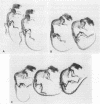Abstract
A new dominant mutation in the laboratory mouse, hypophosphatemia (gene symbol Hyp), has been identified. The Hyp gene is located on the X-chromosome and maps at the distal end. Mutant mice are characterized by hypophosphatemia, bone changes resembling rickets, diminished bone ash, dwarfism, and high fractional excretion of phosphate anion (low net tubular reabsorption). Phosphate supplementation of the diet from wearning prevents the appearance of severe skeletal abnormalities. The hypophosphatemic male mouse resembles human males with X-linked hypophosphatemia and the Hyp gene is presemably homologous with the X-linked human gene. The mouse model should facilitate study of the defect in transport of plasma inorganic phosphate anion.
Full text
PDF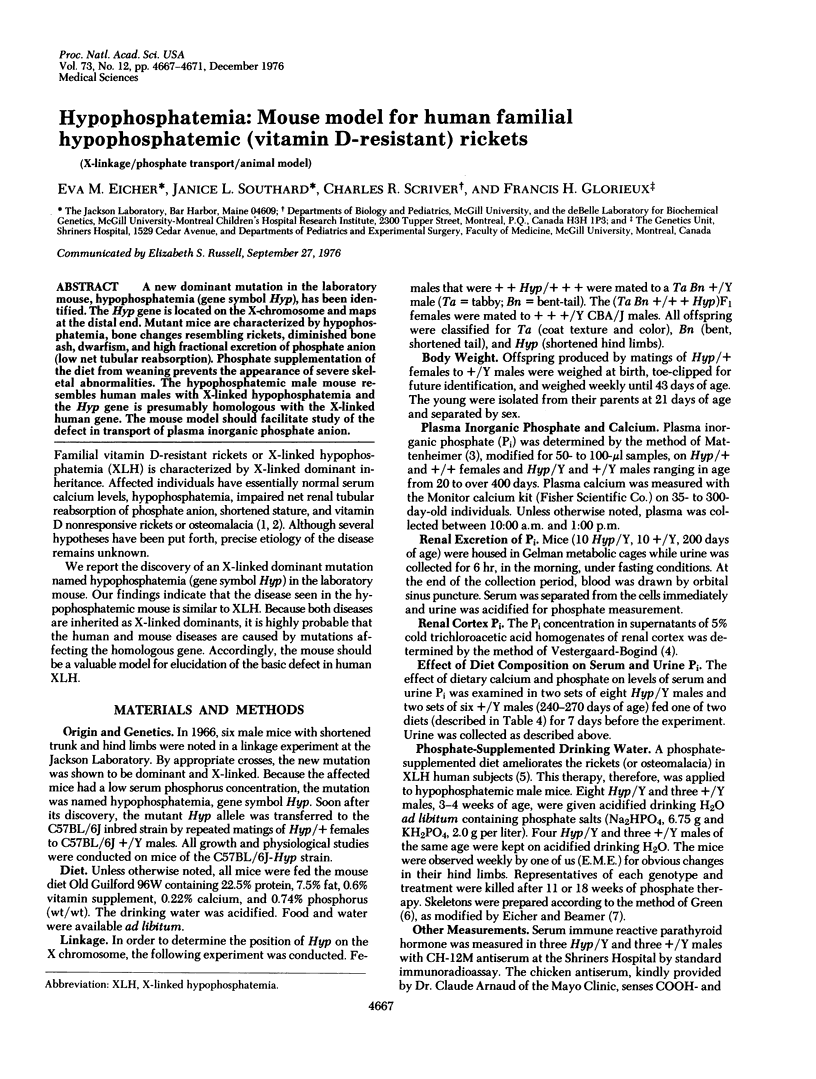
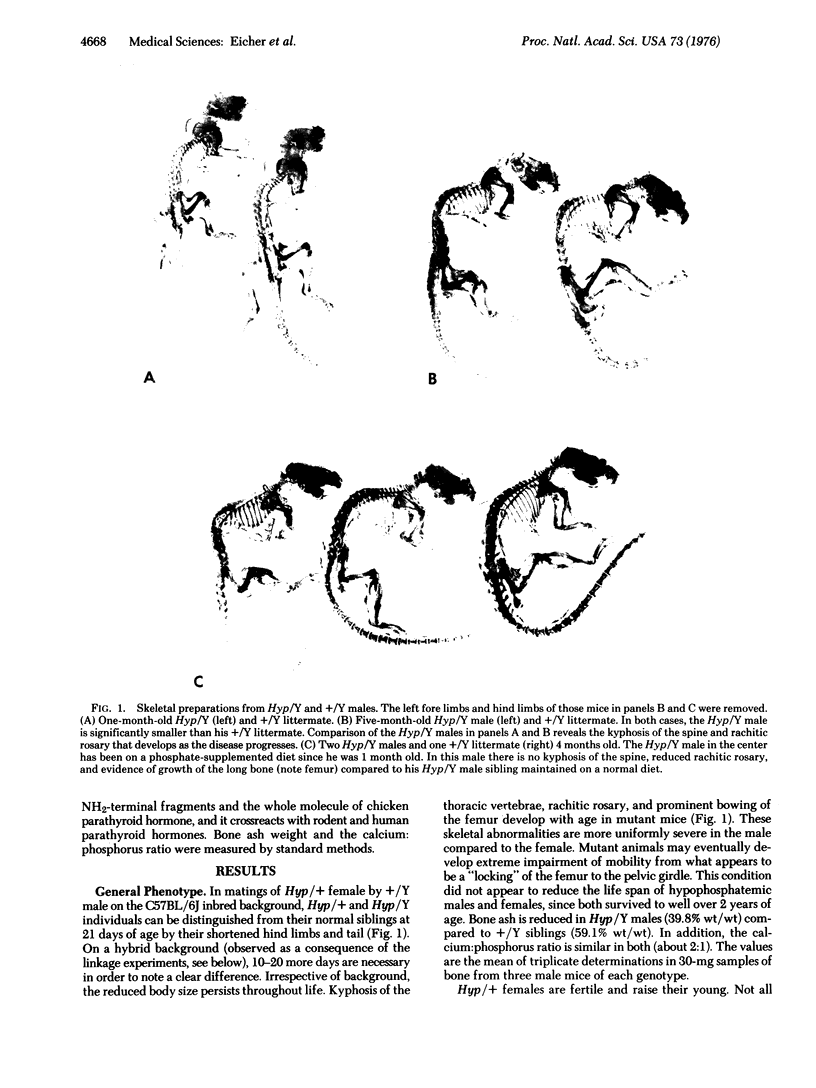
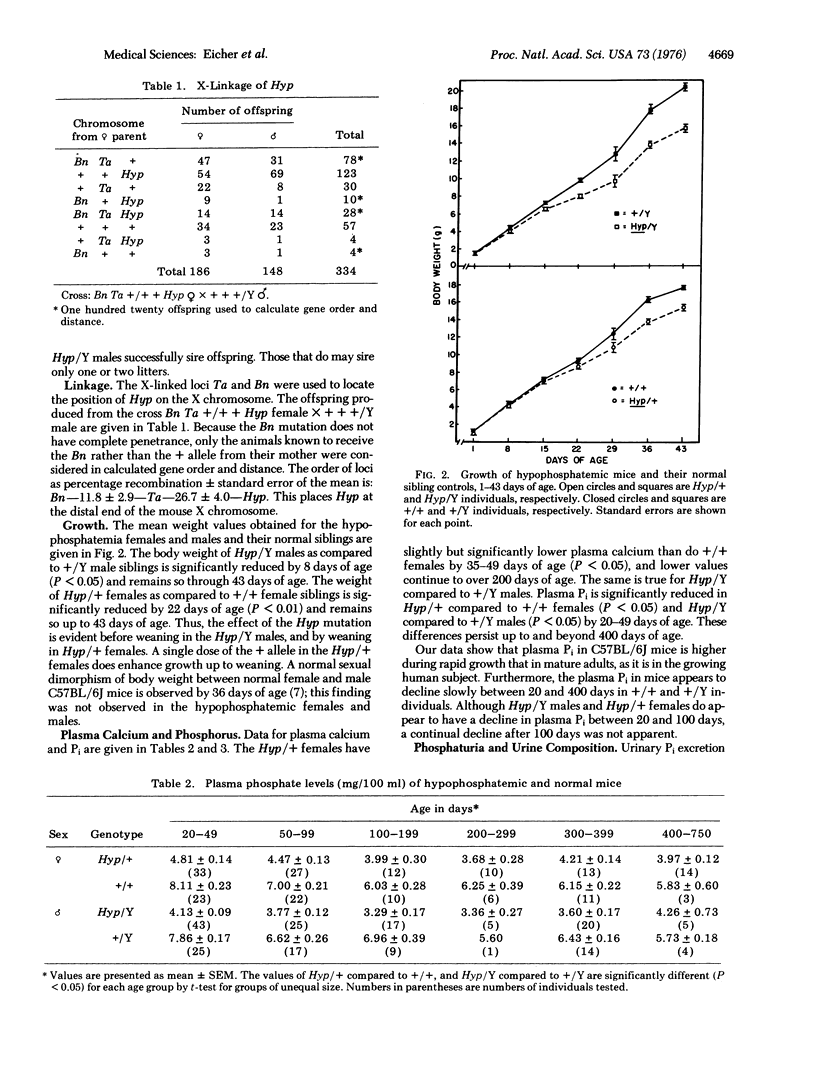
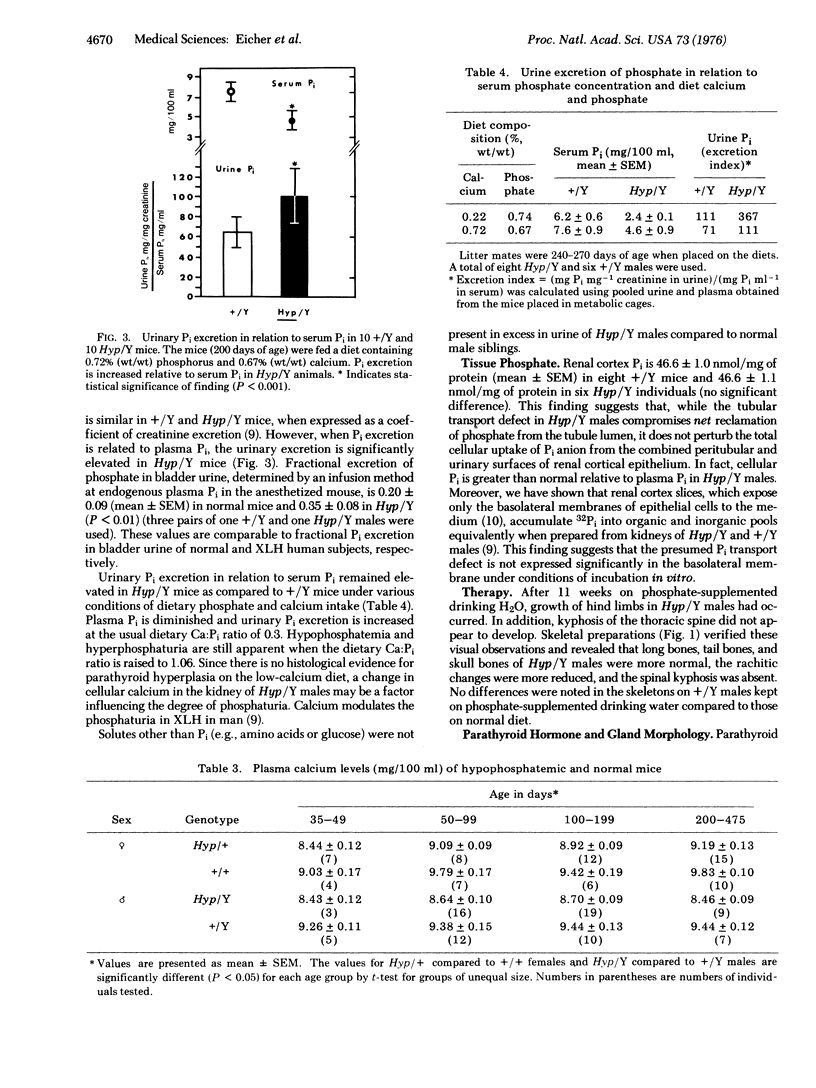
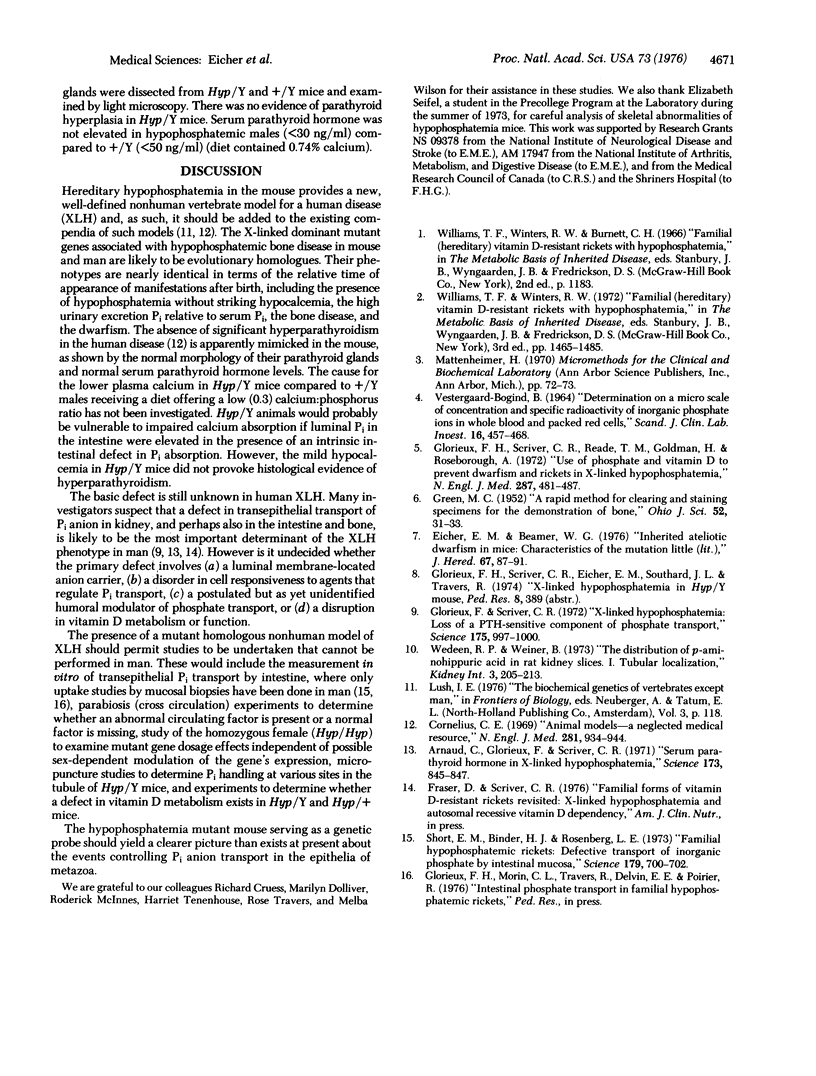
Images in this article
Selected References
These references are in PubMed. This may not be the complete list of references from this article.
- Arnaud C., Glorieux F., Scriver C. Serum parathyroid hormone in X-linked hypophosphatemia. Science. 1971 Aug 27;173(3999):845–847. doi: 10.1126/science.173.3999.845. [DOI] [PubMed] [Google Scholar]
- Cornelius C. E. Animal models--a neglected medical resource. N Engl J Med. 1969 Oct 23;281(17):934–944. doi: 10.1056/NEJM196910232811706. [DOI] [PubMed] [Google Scholar]
- Eicher E. M., Beamer W. G. Inherited ateliotic dwarfism in mice. Characteristics of the mutation, little, on chromosome 6. J Hered. 1976 Mar-Apr;67(2):87–91. doi: 10.1093/oxfordjournals.jhered.a108682. [DOI] [PubMed] [Google Scholar]
- Glorieux F. H., Scriver C. R., Reade T. M., Goldman H., Roseborough A. Use of phosphate and vitamin D to prevent dwarfism and rickets in X-linked hypophosphatemia. N Engl J Med. 1972 Sep 7;287(10):481–487. doi: 10.1056/NEJM197209072871003. [DOI] [PubMed] [Google Scholar]
- Glorieux F., Scriver C. R. Loss of a parathyroid hormone-sensitive component of phosphate transport in X-linked hypophosphatemia. Science. 1972 Mar 3;175(4025):997–1000. doi: 10.1126/science.175.4025.997. [DOI] [PubMed] [Google Scholar]
- Short E. M., Binder H. J., Rosenberg L. E. Familial hypophosphatemic rickets: defective transport of inorganic phosphate by intestinal mucosa. Science. 1973 Feb 16;179(4074):700–702. doi: 10.1126/science.179.4074.700. [DOI] [PubMed] [Google Scholar]
- VESTERGAARD-BOGIND B. DETERMINATION ON A MICRO SCALE OF CONCENTRATION AND SPECIFIC RADIOACTIVITY OF INORGANIC PHOSPHATE IONS IN WHOLE BLOOD AND PACKED RED CELLS. Scand J Clin Lab Invest. 1964;16:457–464. doi: 10.3109/00365516409060539. [DOI] [PubMed] [Google Scholar]
- Wedeen R. P., Weiner B. The distribution of p-aminohippuric acid in rat kidney slices. I. Tubular localization. Kidney Int. 1973 Apr;3(4):205–213. doi: 10.1038/ki.1973.33. [DOI] [PubMed] [Google Scholar]



